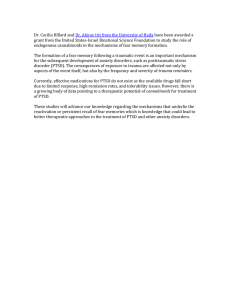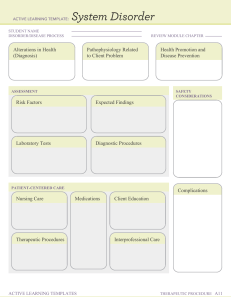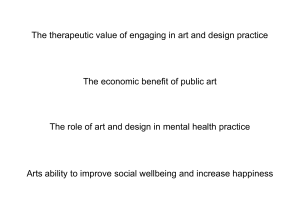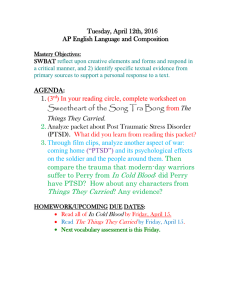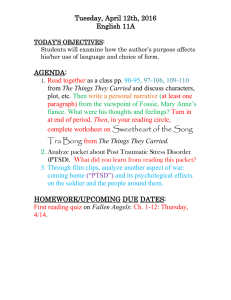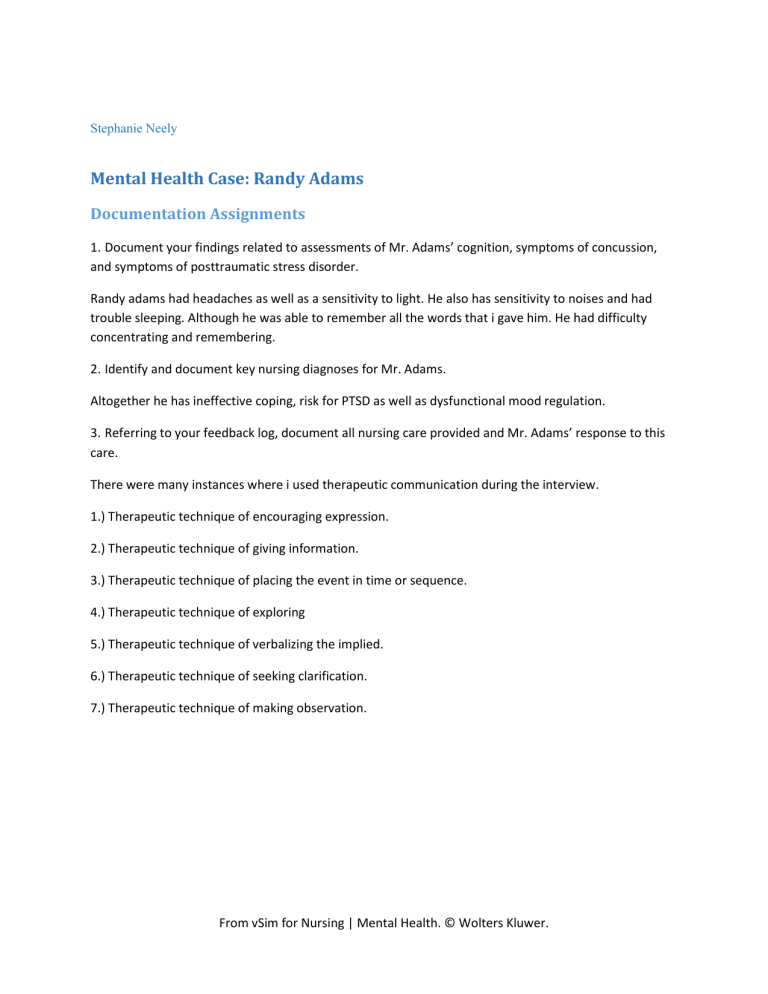
Stephanie Neely Mental Health Case: Randy Adams Documentation Assignments 1. Document your findings related to assessments of Mr. Adams’ cognition, symptoms of concussion, and symptoms of posttraumatic stress disorder. Randy adams had headaches as well as a sensitivity to light. He also has sensitivity to noises and had trouble sleeping. Although he was able to remember all the words that i gave him. He had difficulty concentrating and remembering. 2. Identify and document key nursing diagnoses for Mr. Adams. Altogether he has ineffective coping, risk for PTSD as well as dysfunctional mood regulation. 3. Referring to your feedback log, document all nursing care provided and Mr. Adams’ response to this care. There were many instances where i used therapeutic communication during the interview. 1.) Therapeutic technique of encouraging expression. 2.) Therapeutic technique of giving information. 3.) Therapeutic technique of placing the event in time or sequence. 4.) Therapeutic technique of exploring 5.) Therapeutic technique of verbalizing the implied. 6.) Therapeutic technique of seeking clarification. 7.) Therapeutic technique of making observation. From vSim for Nursing | Mental Health. © Wolters Kluwer. 4. Document instances of therapeutic communication and Mr. Adams’ response to this intervention. Altogether during the interview he replied with tangential responses. He has a hard time remembering and concentration. Each response goes with the number in question three. 1. Talked about his wife. I said that she must be very important to you. Tried to get the patient to express his feelings. 2. He said i was asking to many questions. I said that is was integral to do so. Gave him information. 3. He said the sounds are painful. I asked if the pain was before or after the sound. Tried to place the event in time. 4. He said that he can not relax and that a good soldier is always prepared. I said tell me more. Technique of exploring. 5. He said he does not need a lot of sleep. I asked him if that meant he was not sleeping well. Technique of verbalizing the implied. 6. He said he always looks for exits. I said I am not sure i understand. Technique of seeking clarification. 7. He said I do not want to talk about the army. I said you seem uncomfortable. Technique of making observations. 5. Document the patient teaching related to posttraumatic stress disorder and concussion, as well as medications, that you provided to Mr. Adams and his wife before discharge. I did provide education about PTSD. I talked to him about what the disease was and the symptoms. I also said that PTSD occurs following a life-threatening or traumatic event. I also told him that the doctor will be examining him for PTSD. I also told him that we will see if he needs a referral to a behavioral health specialist. 6. Document your handoff report in the SBAR format to communicate Mr. Adams’ future needs. S: Randy Adams, a 28 year old man. He came in regarding possible PTSD as well as a concussion after a motor vehicle accident. Randy did lose consciousness as a result. B: He is a veteran. Due to his background he still believes that he is in Afghanistan. During his time in the war he did sustain injuries from bombs. He has a history of migraines. He is on Topiramate and sumatriptan. From vSim for Nursing | Mental Health. © Wolters Kluwer. A: All vitals are WNL. He was screened for PTSD. Possible PTSD suspected. Suspected neurological issues from the concussion/bomb blasts. R: He should follow up with a BHT. Also due to his concussions, I feel it would be necessary to follow concussion protocol. Dim lights, calm/quit environment. Continue all medications. Also follow with patient education about medications and PTSD. From vSim for Nursing | Mental Health. © Wolters Kluwer.
